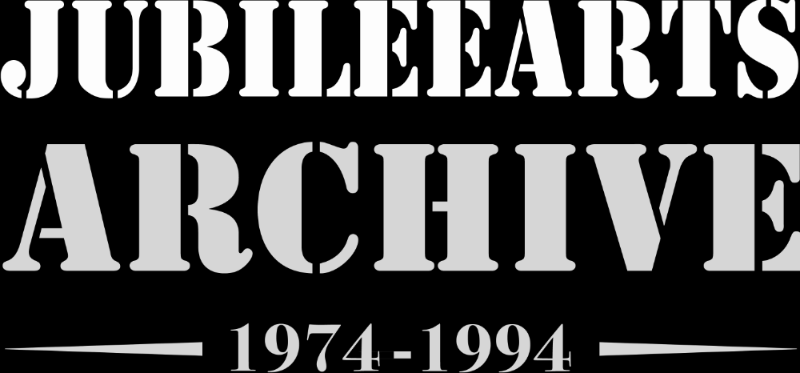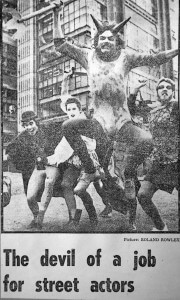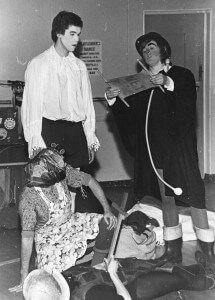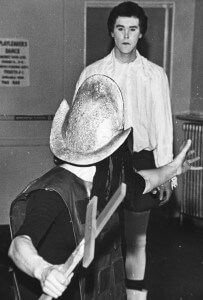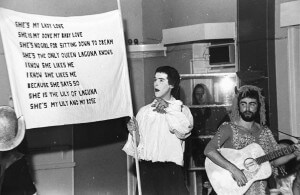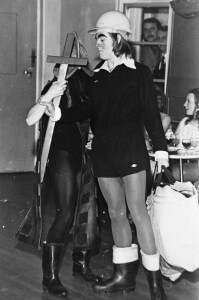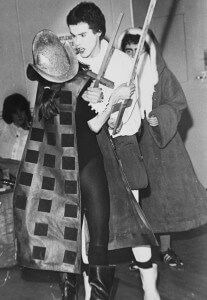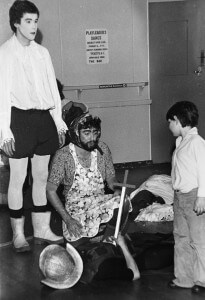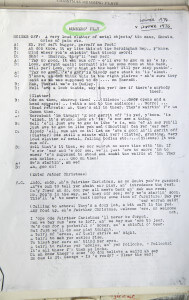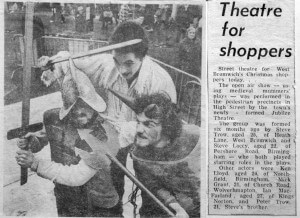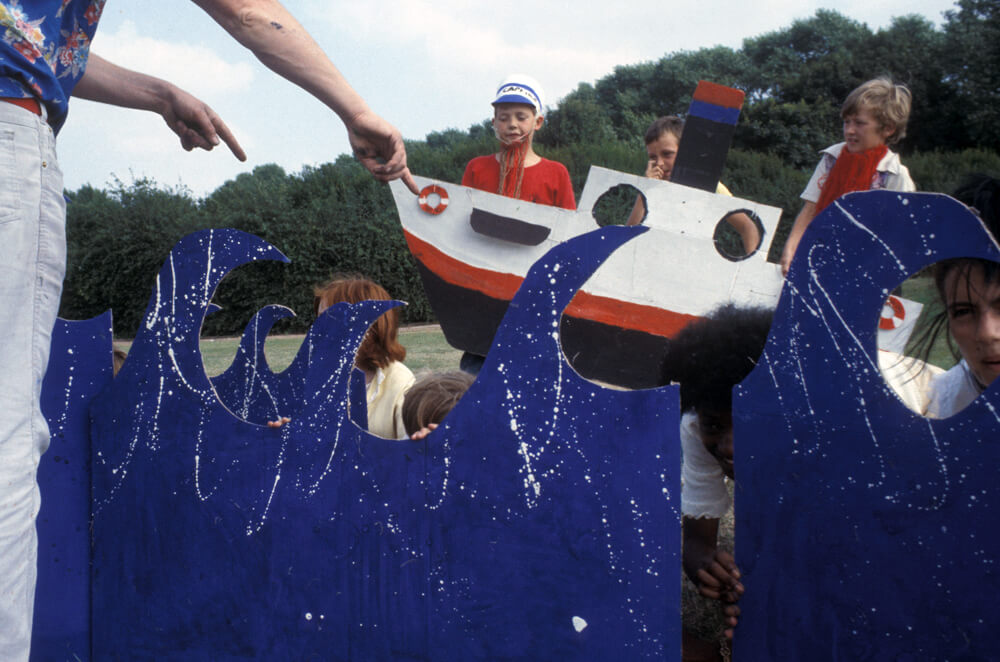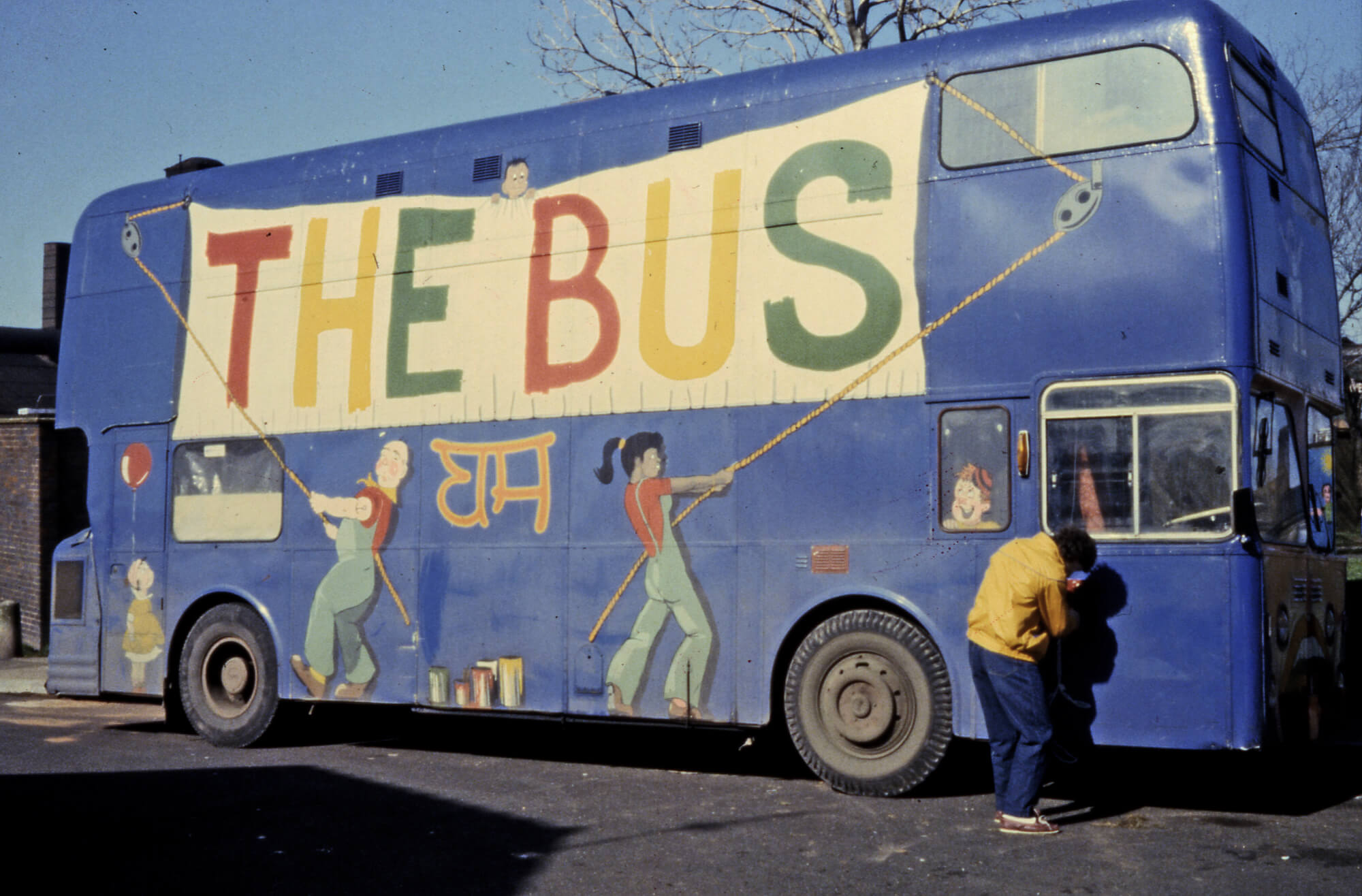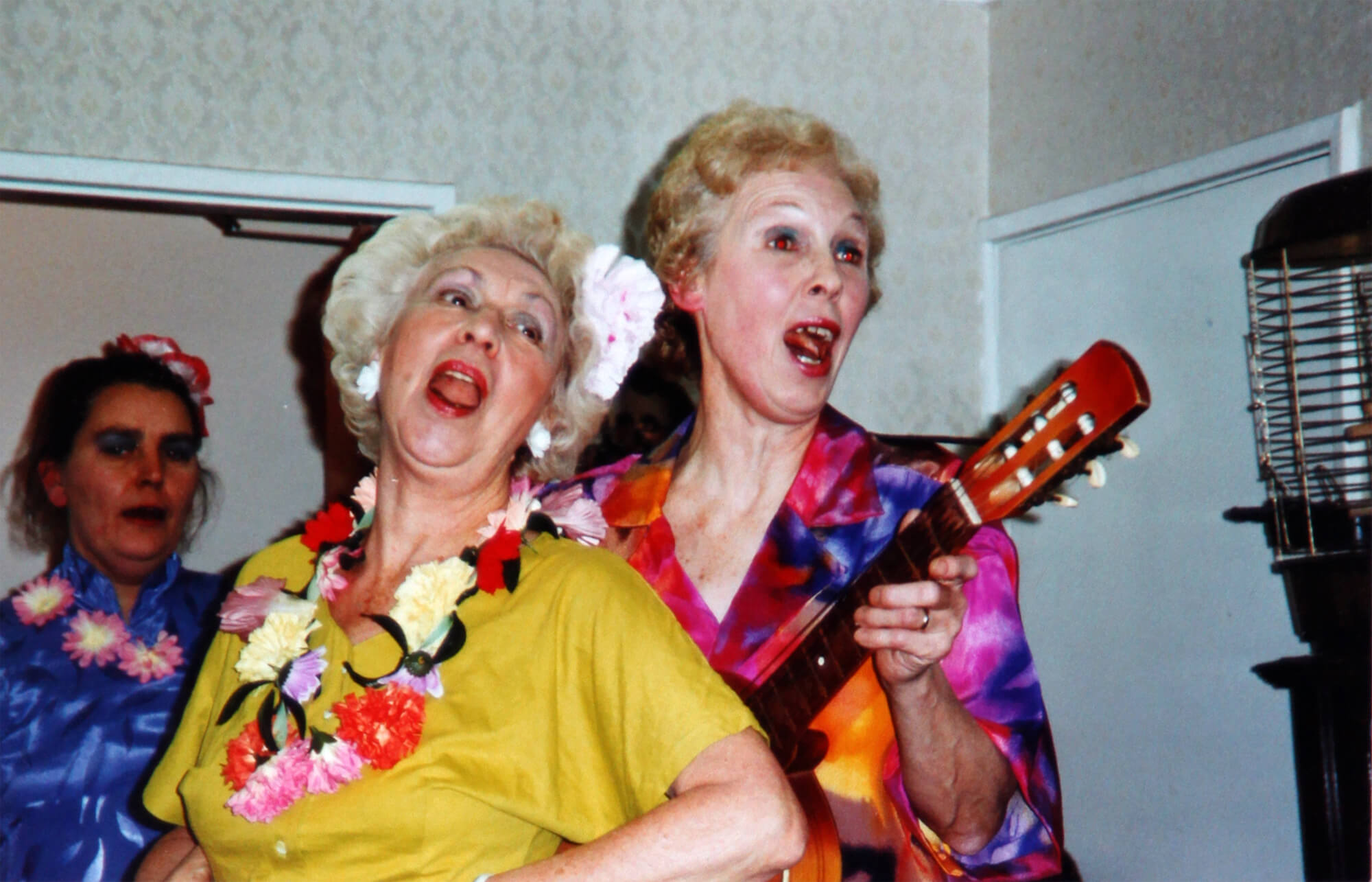In December 1974, Brian Wilkes happened upon something unusual happening on the High Street, West Bromwich. The weather was not inclement and the atmosphere was unusually jolly.
“It was a bit of a surprise to come upon an old Mummers’ Play being performed on the street opposite Marks and Sparks,” he recalls. “I couldn’t believe it. I came in at the tail end and they said they were going to do another, so I came back with my tape recorder.”
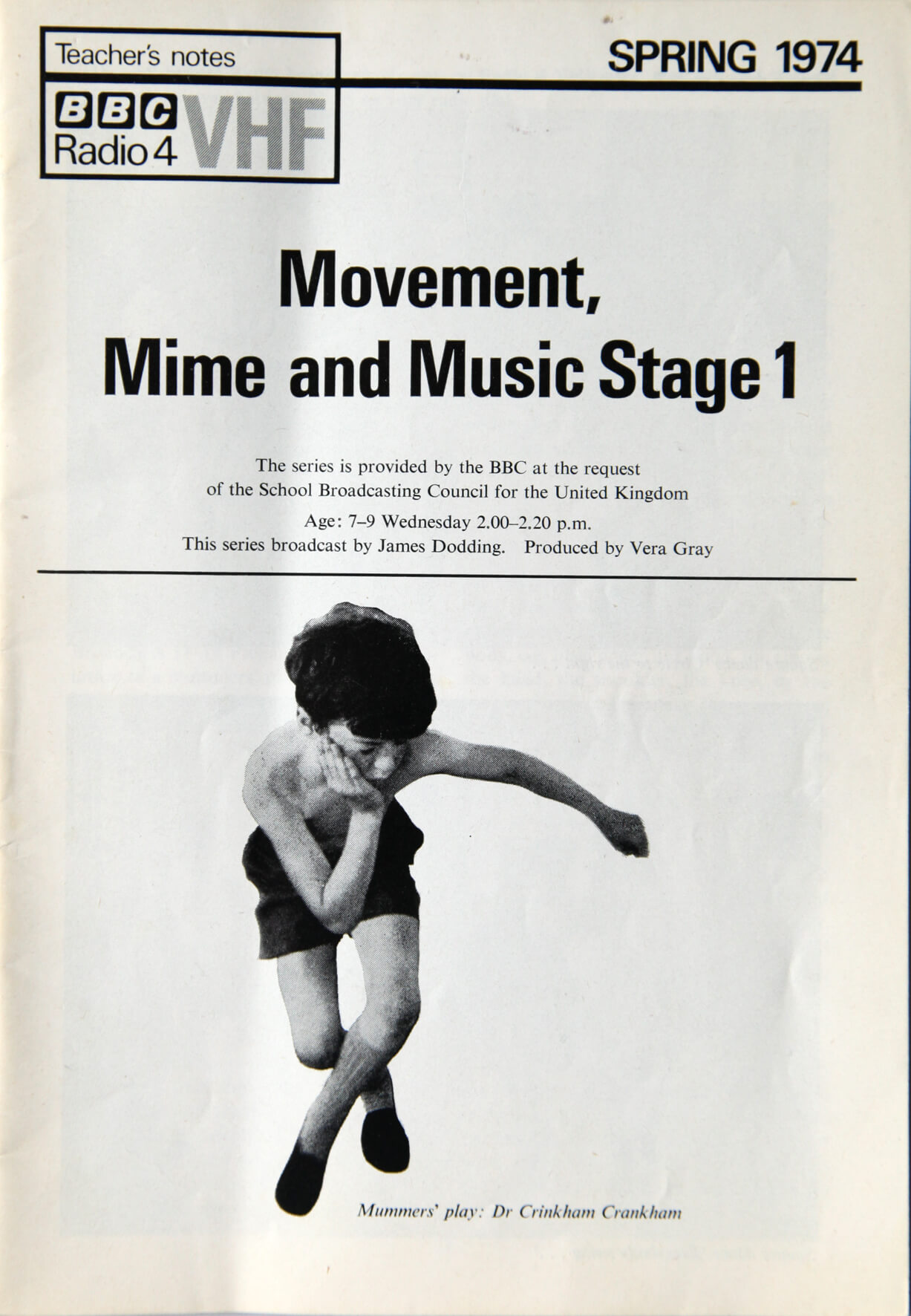
At the time, Brian was a teacher at Yew Tree primary school in Sandwell, in charge of audio-visual and sound recording. That year the BBC broadcast a radio series for schools for 7-9 year olds called ‘Mime, Movement and Music Stage 1’, with detailed instructions on how to perform a Mummers’ Play. “So it all tied up for me you see,” said Brian. “It created quite a stir at the time, all these actors leaping out of the door of the Woolworths store in their costumes. It stopped the traffic.” He transcribed the tape he recorded that day and using this went onto to organise school performances of the play over subsequent years. “It inspired me to do a lot of research into Mumming customs and local folklore. These were part of the ancient pagan midwinter celebrations – it was all about good and evil.”
“Who ay a Doctor? I’ll crack yer nut. Look, this is me susstificut!” cries out Dr Brown, one of the characters performing in the Mummers Play at Wood Street Community Centre, Tipton, in December 1976. Parental Advisory Warning – the play features some cross-dressing. And so they began with this Mummers Play, performed in Black Country dialect, first staged outside Woolworths in West Bromwich at Christmas 1974 and revived a few times after, including Wednesbury town centre. Tradition has it that these ‘comedies’ were performed during the festive season, though sometimes also on All Souls Day or at Easter. Characters usually featured included one King George III, a certain Boldgiah (the hero knight), Father Christmas, Dr Brown, Beelzebub and Devildoubt. They battled each other until one was killed. The Jubilee version, based on an old script preserved by a local family, renamed the Hero ‘Hector the Turkish Knight’, gave him a mother, ‘Mrs Slasher’, King George was transformed into ‘St. George’, and the character of Devildoubt became ‘Safety Sam’, a hapless referee who oversees the fight scenes.
The main season for ‘Mumming’ throughout Britain was Christmas, though sometimes they were also performed on All Souls Day or at Easter. Until well into the 20th century, these old folk customs marked the passage of the winter solstice. In one of his books, the historian F.W. Hackwood (1851-1926) recounted fragments of dialogue he had seen at a performance in a Wednesbury Tavern at New Year 1879. Both ‘Wassailing’ and ‘Mumming’ were not uncommon in parts of the Black Country, with performers calling themselves ‘guisers’, blackening or flouring their faces as participants were intended to remain incognito, but the last Brian knew of these customs being enacted was back in the 1930s.
The word ‘mummer’ derives from Old French word ‘momon’, meaning a mask, and the German ‘Mummen’ to muffle up or disguise. Here on West Bromwich high street, the performers were from the newly founded Jubilee Theatre Company – described in the Midland Chronicle as ‘a group of 20th century strolling players’. One of their members, Steve Trow, was intrigued by an article he had read about the Gregory family of Wednesbury, who had performed an annual Christmas charade some 60 years earlier using Mummers characters. Steve believed the Wednesbury version to be at least 200 years old, as one main character was King George III. Other characters were Boldgiah (the hero knight), Father Christmas, Dr. Brown, Beelzebub and Devildoubt. A member of the Gregory family had written down all that could be remembered on ‘two sheets quarto typewritten sheets’ and a copy of this inspired the 1974 script, which Steve and Ken Lloyd authored using local Black Country dialect. Their script ran to 8 pages and the performance lasted between 30 and 40 minutes. They renamed the Hero ‘Hector the Turkish Knight’, gave him a mother, ‘Mrs Slasher’, King George became ‘St. George’, and they changed the character of Devildoubt to another comic figure, ‘Safety Sam’, a hapless referee who oversees the fight scenes.
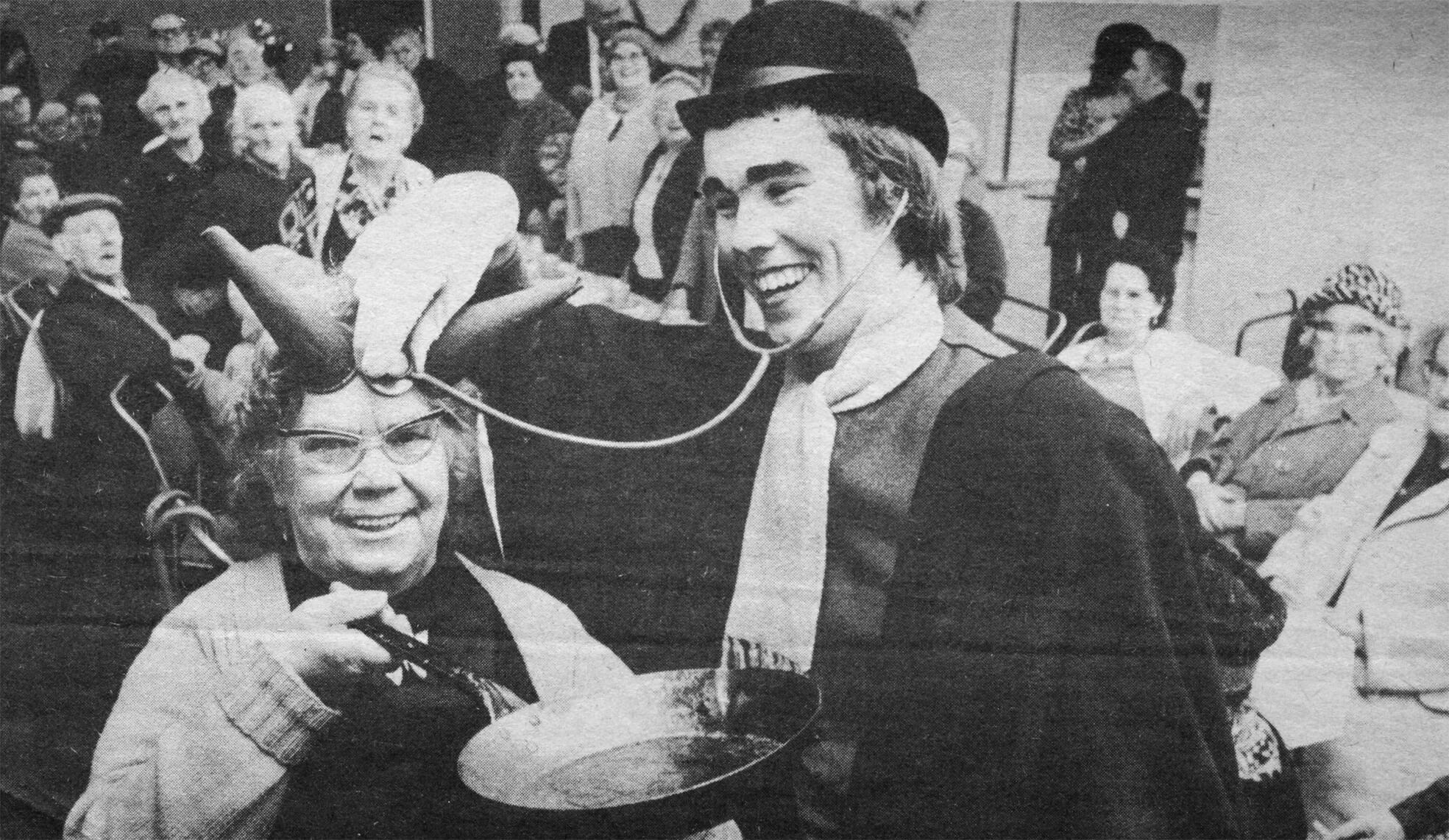
“Steve Trow says the costumes will be spectacular and gaudy and the rhyming couplets will be the most awful to ever see the light of day.”
– from press release December, 1974
Mummers’ Plays are based on ideas of duality and resurrection, a kind of ritual enacted with ‘sympathetic magic’ to influence the course of events. The central incident is the killing and restoring to life of one of the characters – in this case the Turkish Knight – hence the need for the Doctor. The characters are introduced one by one in a series of rhyming couplets, in dialect, with local references dotted throughout the script. The St. George character was Black Country through and through. As he proclaims upon his entry, relating his prowess with a cardboard sword:

“Ah fust lernt ahto attack an’ defend
Up at the ’Awthorns at the Brummie Road end
Ah’ve allus ’ad to fight me way
An’ ah’ll bost anybody ’oo say I ay
As a ‘prentice knight ah wor saft
Ah goe me armour from the Patent Shaft
Ah’ve fought wi’ lions whippets an’ men
f I ’it ’em once they doh cum agen
But the one that gid me the biggest bostle
Was that bloomin’ dragon up at Dudley Costle
The smoke gorrup me adenoids
An’ the flairme was wuss tah Stewards and Lloyds
Yoh should ’a’ sin ’im toss ’an butt
Til ah dahted ’im in Tipton cut.”
Jubilee went on to perform the play in Wednesbury market and local pubs and clubs. At Christmas 1976 and into the new year they toured it to community centres in the borough (from which these photos are taken, now preserved by Sandwell Community History Archives Service, along with a copy of the original script). The gallery of images are from a performance at Wood Street Community Centre, Tipton, December 1976. St. George is played by Steve Trow, Doctor Brown and Safety Sam by Pete Wooldridge, Mrs Slasher and Father Christmas by Malcom Ratledge, Hector the Turkish Knight by Sandy Young, an Australian lady.
They planned further tours of the show, but then they discovered a box of magic tricks… but that’s another tale.
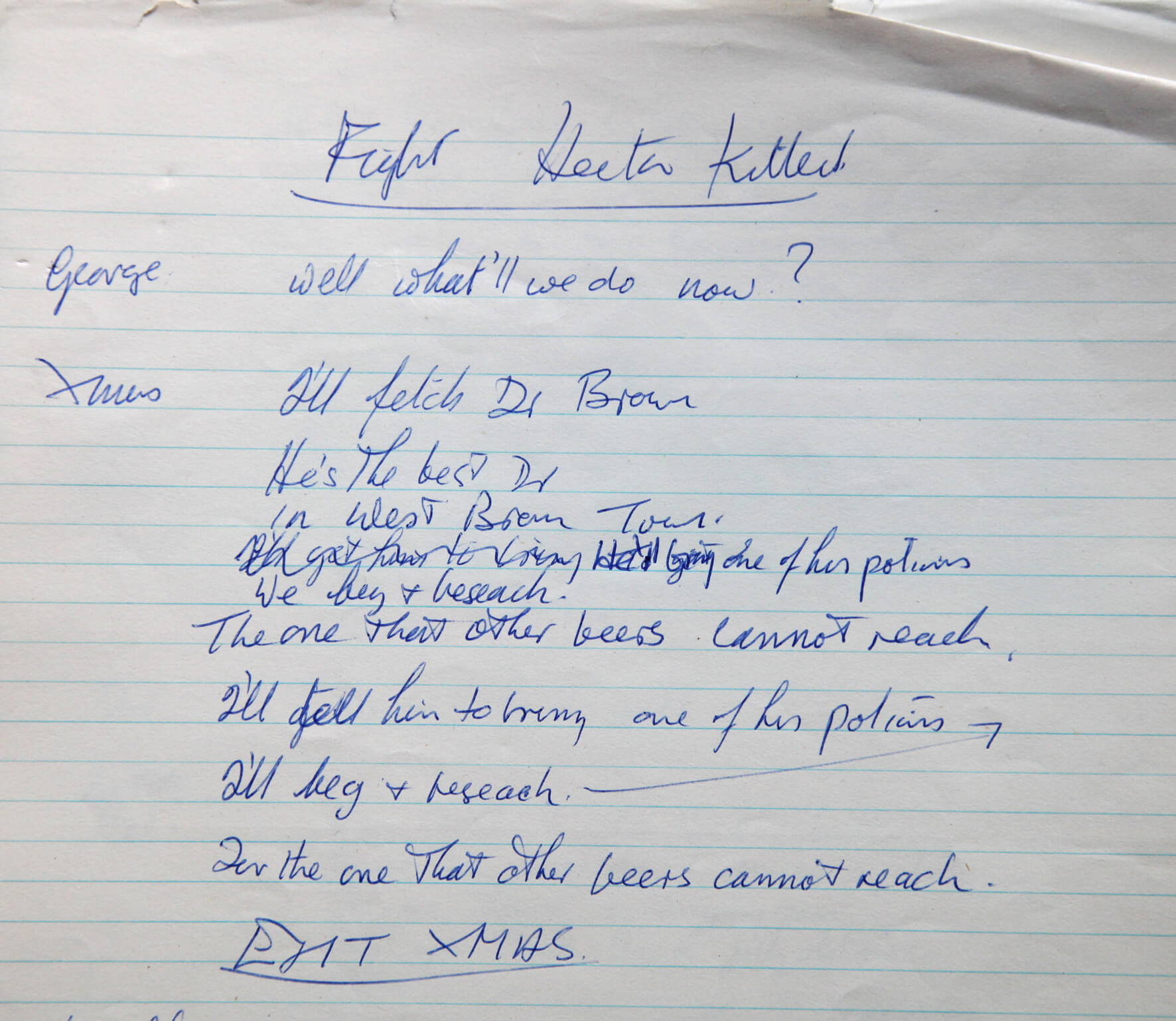
Brian’s transcription from his tape recording of the Christmas 1974 show.
Extract from Mummers Play with the voice of Brian Wilkes, created for Sandwell May Day event in West Bromwich 2014

Audio recorded by Brian Wilkes, 1974.
Some home footage of the Mummers Play in a community centre, Christmas 1976.
